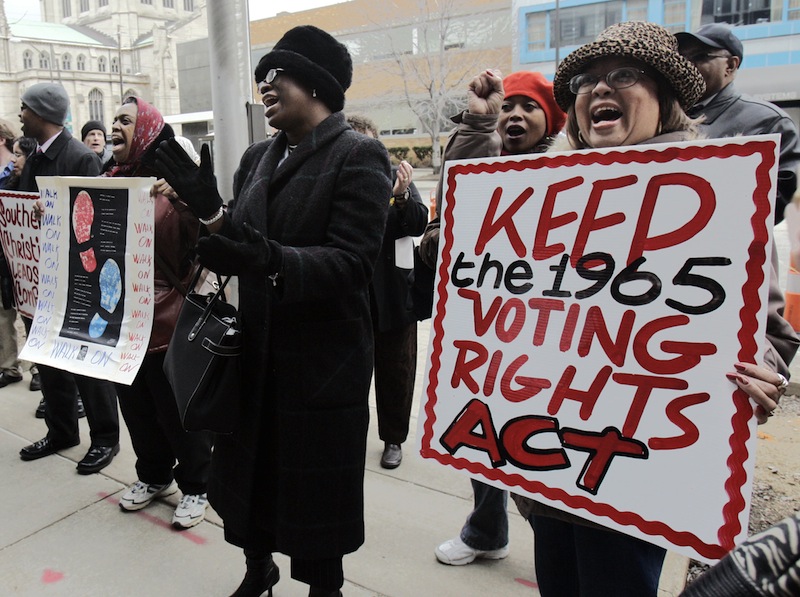A trio of researchers have released a new study that found the recently gutted provision of the Voting Rights Act has played a major role in boosting African-American political representation on the municipal level around the country.
Researchers at the University of Wisconsin at Milwaukee, Rice University and Ohio University found that municipalities covered under Section 5 of the Voting Rights Act — which required certain jurisdictions to get federal approval (often referred to as preclearance) before changing their voting laws — saw a more rapid increase in black political representation than municipalities that were not covered under the provision.
Section 5 was largely rendered moot by the Supreme Court in Shelby County v. Holder in June. In that case, the court found that the formula in Section 4 of the Voting Rights Act that determined which jurisdictions would be subject to Section 5 preclearance was unconstitutionally outdated. Since then, with a divided Congress unlikely to agree on revising Section 4, the Justice Department has announced lawsuits against Texas and North Carolina for passing new, strict voting laws. Texas was previously required to get federal approval before changing its voting laws, and some counties in North Carolina were as well.
The study, available online and to be published in the March 2014 issue of the Journal of Politics, suggests that there could be a decline in black representation at the municipal level because of the Supreme Court’s ruling.
“It’s going to be like Karl Marx said, history repeats itself twice. First time it’s tragedy, second time it’s farce, and that’s what’s going to happen. We’re going to see fewer minority candidates at least at the city council level,” Ohio University Professor Anirudh V. S. Ruhil, one of the study’s authors, told TPM on Monday.
The study used data from 4,000 municipalities between 1981 and 2006. The researchers found that black candidates made the largest gains on city councils covered by Section 5. For instance, in 1981 40 percent of the cities covered under Section 5 had just one black city council member. By 1991 there was a 74 percent increase in black political representation on those councils. By contrast, cities that were not covered under Section 5 saw a much slower increase.
Section 5 of the Voting Rights Act covered Alabama, Alaska, Georgia, Louisiana, Mississippi, South Carolina and Virginia. It also covered certain counties in Arizona, Hawaii, Idaho and North Carolina.
“As our analysis shows, ceteris paribus, Section 5 coverage leads to greater breadth of black representation on city councils,” the study said. “In particular, the number of cities that have crossed the representational hurdle and elected a black member to their city council has increased precipitously under Section 5 coverage. While gains have also been made in cities not covered by Section 5, they have occurred at a decidedly slower pace.”
The researchers write that what they find “over time, is that cities not covered by Section 5 that have crossed the hurdle of representation have remained more stagnant over time, unable to expand beyond a single black council member…”
One of Ruhil’s coauthors, Paru R. Shah of the University of Wisconsin at Milwaukee, stressed that she and her colleagues considered important factors such as the black population for the municipalities examined.
“And the big thing that’s important to note is that we control for things that also could impact whether or not there’s black representation like size of the voting population,” Shah told TPM. “Even in places that aren’t covered if they have a large voting population they could also have more black representation. But what we find is that the Voting Rights Act over time has meant that all those increases that we’ve talked about in terms of representation more generally have happened more often in covered places.”
Beyond that though, even in instances where there already was one black representative, the municipalities covered by Section 5 saw a more rapid increase in black representation.
Ruhil cautioned that the study’s findings are not necessarily analogous to other elected offices like the Senate or House of Representatives.
“In my eyes, I think local elections are different in many ways, largely because several end up being nonpartisan, at least on paper, so money doesn’t play as big a role, the weight of the party and the party’s campaign machine doesn’t play as big a role as it does in state and federal elections,” Ruhil said. “I think it makes for a big difference.”






